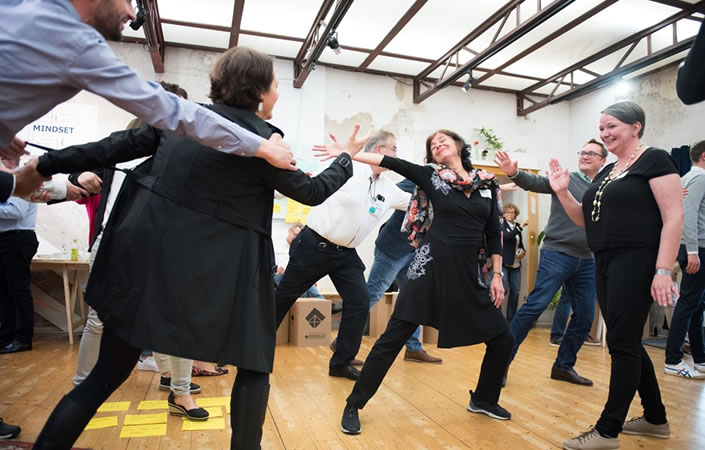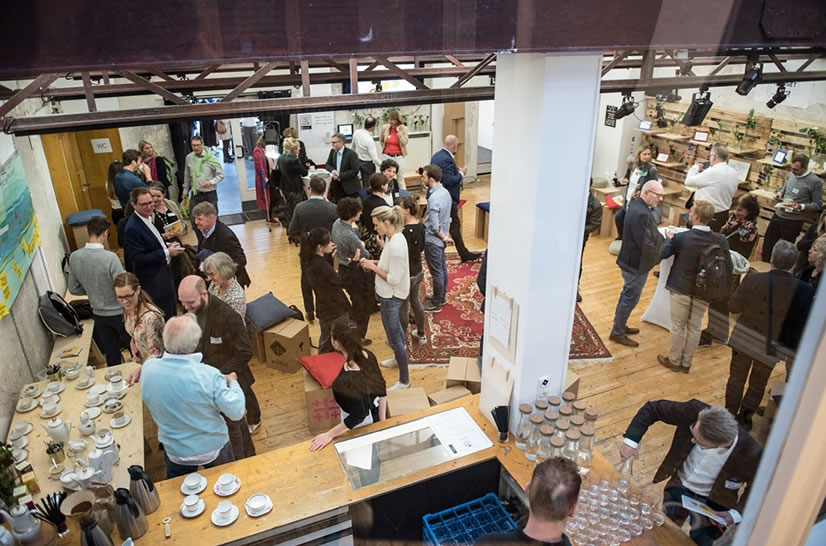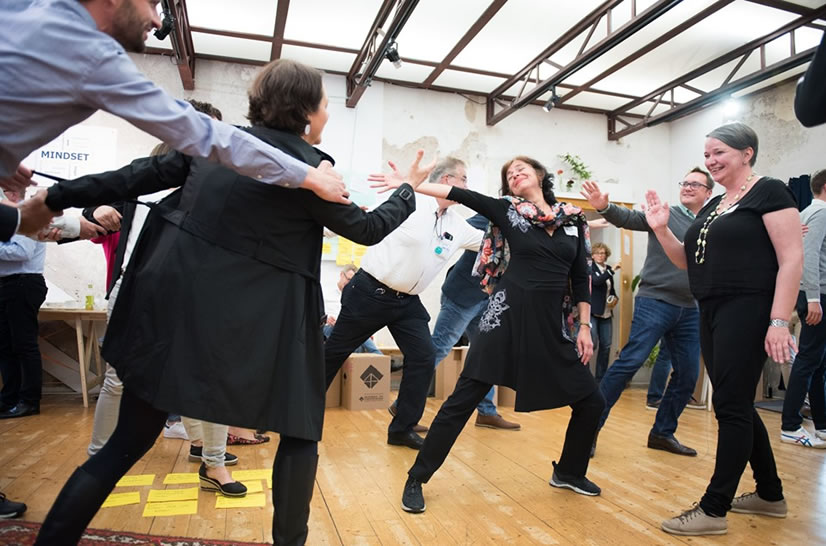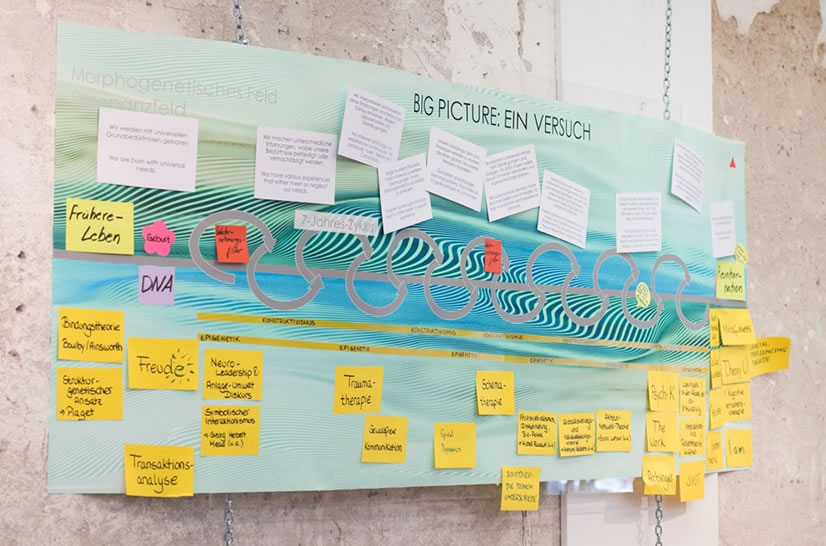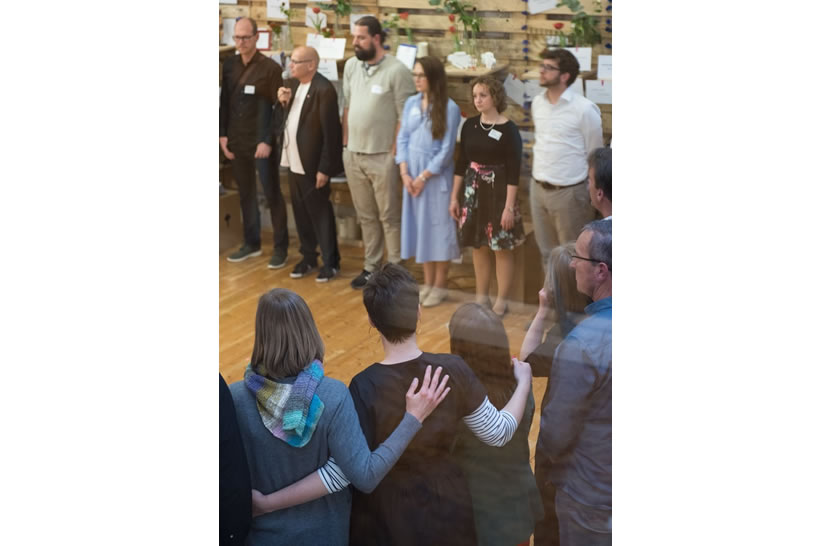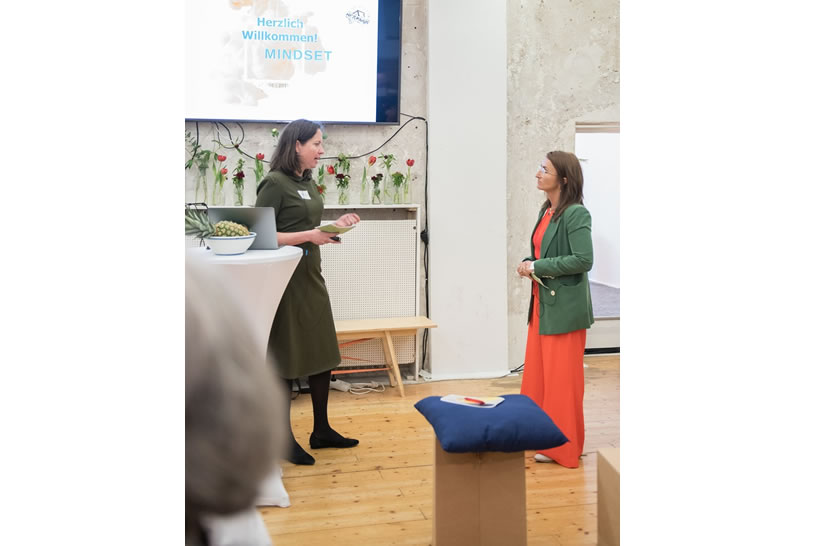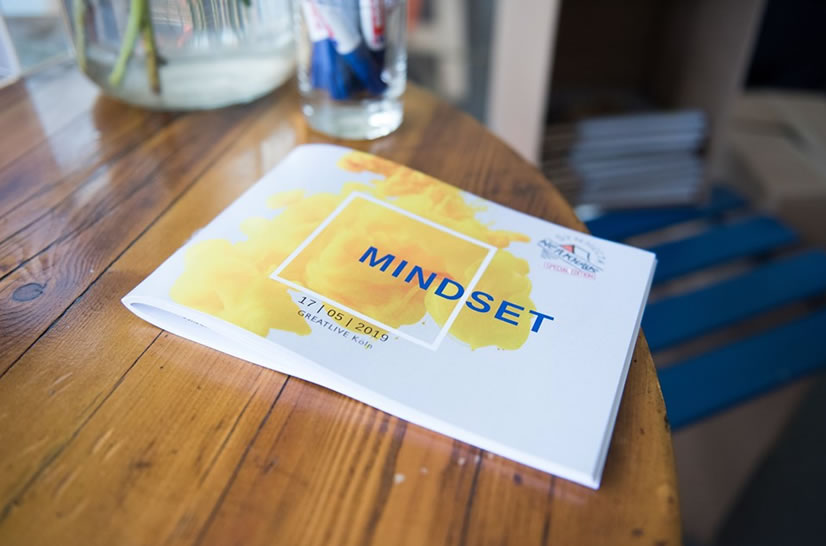7. Juli 2020

Gespräche mit Führungskräften enden oft mit der Aufforderung, manchmal der Bitte: Zeig uns den kürzesten Weg, die schnelle Problemlösung, die gerade Linie von A nach B – glatt, kurz, eindeutig. Dieser Wunsch passt in die Welt der klassischen Beratung, er ist für eine »Prozessberatung« oder salopper gesagt die weiche Beratung, die über Kultur, Mindset, Beziehung, Einstellungen und Verhalten spricht und arbeitet, unerfüllbar. Kurven, Umwege, Holzwege sind hier angemessenere Bilder über den zu gehenden Weg.
Kommen wir zurück zum kürzesten Weg, der geraden Strecke. Was wenn genau dieser Weg nichts anderes ist als ein »mehr desselben« – nun am Anfang mit noch mehr Enthusiasmus, mehr Kraftaufwand und dann doch oft im Gehen schwindender Begeisterung. Man endet eben zu oft im Selben, und die Probleme, Barrieren tauchen wieder auf. Nun hilft dasselbe ja oft, wenn denn die Welt dieselbe bliebe. Was aber hilft, wenn die Welt (der Markt, die Technologien, die Bedürfnisse, die Politik usw.) sich unvorhersehbar verändern, also ein dynamisch kontingentes System sind? Für das, was auf uns zukommt, haben wir oft noch keine Begriffe, es ist noch undefiniert.
Vieles unserer konkreten Arbeit in Workshops besteht in der Kreation eines atmosphärischen Wechsels, der Ermöglichung von Zögern, von Langsamkeit – der Erlaubnis und der Möglichkeit zur Offenheit, Umweglichkeit und Nachdenklichkeit. Unser Beitrag ist nicht Problemlösung, sondern die Ermöglichung von anderen, öffnenden Perspektiven, Spielräumen. Das geht nur mit der Haltung einer Zielverzögerung, einem Wechsel des Horizonts, in dem die Kommunikation stattfindet. Es bedeutet, dass Erzählung wichtiger ist als Begrifflichkeit, dass wir uns im noch nicht festgelegten miteinander bewegen, denn nur so erreichen wir den Grund von Kreativität. Wir gehen gemeinsam durch Unsicherheit, in der dann auch anderes sichtbar wird – andere Zugänge zum Thema, andere Möglichkeiten der Problemlösung, das Entdecken von Wegen, die im Dickicht unserer Begriffe verborgen waren.
Es liegen so viel an Möglichkeiten, Perspektiven und Lösungen in den Individuen verborgen – soziale Faktoren, wie die Tendenz zur Gruppenanpassung, und kulturelle Faktoren wie die bevorzugten Mindsets (Mentalitäten) von Organisationen versperren uns den Weg zu diesem Potential. Die erste Aufgabe einer Prozessberatung und einer ästhetisch orientierten Organisationsentwicklung besteht in der Gestaltung von Offenheit, die nur im Prozess von Zielverzögerung und dem öffnenden Angebot von differenten Horizonten möglich ist. Einer Welt, die sich in einem offenen Horizont bewegt, können wir selbst nur mit offenen Formen der Wirklichkeitsrepräsentation begegnen, erst hierdurch öffnen sich alternative Zugänge zu den gestellten Aufgaben. In der verzögerten, nachdenklichen Kommunikation wird tentatives Handeln möglich, welches schließlich in stringentes Handeln zu münden vermag.
Rüdiger Müngersdorff
Foto: Kees Streefkerk by unsplash.com
16. April 2020

How can we find novel ways to pair physical distancing with social connection at work?
(Katrijn van Oudheusden)
Introduction: The Need
As seven strangers attempt to scrutinize each other’s faces over a limited internet bandwidth, it becomes clear once again how unskilled we are at compensating for the challenges of online communication. Although all workshop participants have their audio and video working, and really seem to be making an effort to be present, half the faces I see are unclear due to the shadows falling on them. A few are frowning into their screens, and one video is frozen solid. As a facilitator, I am trained in reading people and adapting my style to them. At the moment, I am navigating through thick fog. But the technology and the lighting are not the limiting factors here, although many will hide behind these aspects to explain the challenges of remote communication.
Our »Leading Remote Teams« workshop gets off to an emotional start as we each describe our current situation working from home. The frustration and stress can be heard and seen in some of the voices and faces, but there is also evidence of hope and excitement coupled with a can-do attitude. This is clear from the examples people give and the choice of words in their descriptions, which even include a feeling here and there. Yet the participants are only volunteering this information because they were asked for it. The exercise is specifically designed to get people talking about their feelings, worries, hopes, and needs. In the rest of the workshop, I will have to do my utmost best using self-reflection and specific tools and methods, to get them to contribute their feelings and needs, as well as their intentions for speaking.
This is the issue this article addresses: When we communicate online, we generally forget to compensate for the loss of interpersonal information. We do not actively take into account that up to 80% of non-verbal communication is lost in digital space. No matter how dedicatedly people gesticulate into their video cameras, the lush interpersonal landscape that tells us so much about each other, turns into a virtual desert online. For this, we must learn to actively compensate by fostering »rich conversations«. Only when we focus on orally adding back to the dialogue what has been lost over physical distance, do we have a chance of deepening relationships online.
The Model
The Rich Conversations Model is a simple (but challenging to implement) formula, that when followed ensures an online dialogue that is replete and deep. Besides being trustworthy, authentic, and generally likeable, the ability to have rich conversations is the key to establishing and fostering online relationships. And online relationship building is the prerequisite for doing business remotely, whether that business is conducted between members of the same team working to deliver a project, between the purchasing department and their suppliers in a negotiation, or between a manager and her subordinate in a coaching conversation, to name just a few examples.
The model itself is simple:
Communicating feelings + needs + intent = rich conversation
Applying this in remote conversations is a true communication skills challenge that brings immediate and tangible results in the quality of the relationship. Perhaps right now you are thinking that this is what makes communication in general, skillful and deep. Definitely. If you are a skillful communicator in analog settings, you may remember to translate these good habits to a remote setting.
Yet for many of us, myself included, the stress and raw »remoteness« of the online setting sets us up to forget about these aspects of good communication. We generally become more task oriented and superficial. We feel under increased time pressure and find ourselves getting impatient, interrupting others, and not scheduling time for emotional check-ins or coffee-corner chats. And as if that weren’t enough, for almost all of us, the digital setting encourages us to lose some of our interpersonal humanity. It becomes easier to treat others as mere objects appearing on our screens, taking up our limited time and energy. It becomes more stressful to open up and communicate how we are doing or what is bothering us. Every inclusion of that which makes us vulnerable and human seems to take even more effort when talking to an object, to a computer monitor. Many extroverts become introverted (although some go in the other direction), and introverts become even more introverted. Sensing the human beings on the other side of our internet connections becomes a chore, instead of being a natural part of human interaction.
If we do not intentionally alter our behavior, we end up eroding our relationships, losing trust and emotional safety in the process. Often too late, we realize that something essential in human relationship was missing online, and the relationship suffered irreversibly. Many will blame the technology for this, arguing that some things simply don’t translate to a remote setting. I disagree.
To counter these tendencies, which are not intrinsic to the technology for digital dialogue, we have to actively and intentionally change our attitude to remote communication, as well as hone our communication skillset. The Rich Conversations Model is therefore composed of two levels: a specific mindset and skillset.
The Skillset
First, the skillset. The skills for rich conversation consist of just three aspects: actively orally communicating a) feelings, b) needs, and c) intent as part of normal conversational flow. The point is not to take extra time-out to talk about our feelings, although this is definitely helpful. The idea of rich conversations is to include feelings, needs and intentions in our normal spoken language, so that the missing humanity in the digital setting is compensated for with our use of words. We can think of this as frequent and clear oral signposts, helping us to navigate the thick interpersonal fog complicating the digital exchange.
a) Skillset Part 1 – Feelings
Do you know what you are feeling in any particular moment? Most of us are generally out of touch with our feelings. Additionally, we have neither the practice nor the vocabulary for communicating feeling states. We can usually determine whether we are happy or angry, perhaps even depressed or excited, but for many of us that is about the extent of our spontaneous concepts for feelings. Finally, we confuse thoughts with feelings. We say we feel disappointed, but this is not so much a feeling as a judgment of someone else’s behavior (as in: you disappointed me). The actual feeling is probably sadness or anger.
In training to become a mediator, I learned about Non-Violent Communication as developed by Marshall B. Rosenberg. This method for conflict de-escalation as developed by Rosenberg includes communicating both our feelings and our needs, and this Rich Conversations Model borrows much from his approach. In the context of trying to navigate the digital dialogue fog, the idea is to proactively and frequently communicate what we are feeling. Our listeners will be missing much in terms of vital non-verbal clues to determine this for themselves and are consequently missing out on important interpersonal information that fosters trust and emotional safety. Not only are we no longer building trust, we also risk corroding relationships.
The solution: we actively tell our conversation partners how we are feeling. If you believe this is too simple a solution, I invite you to go ahead and try this a few times in your next online meeting. Also go ahead and ask for feedback after the meeting, to determine if anyone noticed anything different.
To be able to communicate our feelings, we need to practice 1) determining what we are feeling, and 2) learning the words for describing feeling states. Both are practices, which means we will have to make multiple attempts and get it wrong many times, before we become skilled communicators of our feelings. I encourage you to print out an overview of both positive and negative feelings and put this in a prominent place on your desk. A helpful overview is Robert Plutchik’s Wheel of Emotions, but any other overview will do, as long as it helps you to start naming and communicating what you are feeling.
»But I cannot possibly tell people that I am feeling ________ (insert negative emotion here).« I hear this excuse all the time. We fail to realize that, in a physical analog setting, we would be picking up on each other’s emotions anyway. We may not actively discuss these emotions, but you can be sure I am noticing that you are frustrated, bored, or just plain angry. When I am experiencing you in a live setting, I have the option of (subtly) reacting to your emotional states. In small and often unconscious ways, I will adapt my behavior in the interest of improving and strengthening our relationship, if that is what I am after. In the remote setting, I will miss out on all these subtle clues about your state of mind, unless you actively communicate them to me. This means I have much less information to act on: to show empathy or to respond adequately to the situation. In the long- or mid-term, this is likely to erode our relationship. A few weeks later, I will notice that we are not as close or trusting with each other as before.
As I see it, communicating our feelings is an opportunity to lead in terms of online behavior. We can go first in strengthening our relationships in a remote context instead of watching passively as they gradually erode. Becoming aware of and communicating our feelings also naturally makes us more empathic towards others. Of course, we can also ask others what they are feeling and experiencing. I would advise caution with this. Putting others under any form of pressure to share their feelings may backfire. Go first, be brave, and in the interest of reinserting the humanity in digital connections, actively communicate your feelings online.
b) Skillset part 2 – Needs
As with feelings, the enrichment of online conversations works through active communication of our needs in the moment. Again, we are usually unaware of what we really need in a particular situation and are usually limited in terms of the vocabulary needed for talking about needs. Expressing which need we want to have met in the moment is another element taken from the Non-Violent Communication method.
All human beings have a shared set of universal needs, that are more or less important to us at different times. We universally recognize all needs however, making it more or less impossible to have an argument about anyone needing anything at this level. Examples of universal needs are belonging, rest, contribution, challenge, understanding, and autonomy. As with feelings, there are different lists and overviews, but the point is not to find a definitive or exhaustive taxonomy. We all have a right to our needs and to finding ways to meeting them, although we can argue about the strategies we use to do this.
In the Rich Conversations Model, actively communicating what it is that I need, allows others to understand what I am trying to achieve with my behavior. For example, instead of simply becoming frustrated at the lack of response and general silence meeting a proposal I just made in a videocall, I can communicate that collaboration is important to me right now and that I would be happy if the others give me their opinions and feedback. This allows my conversation partners to understand what it is that I am really after, to react to me with empathy, and to figure out a shared course of behavior that can meet my needs as well as theirs. Some of them may even communicate their own needs in response, for example that they need more clarity and structure to understand the proposal before commenting. All of this would remain implicit and lost in the fog of the digital space if I do not proactively communicate my needs.
In the same way as with feelings, asking others about their needs is good communication practice. Nevertheless, I again recommend going first and leading by example by expressing your own needs first. If we all focus on enriching our own dialogue first, we will have made a significant leap in deepening online conversations, without trying to make anyone else do anything they are not ready to do.
c) Skillset part 3 – Intent
The third and final aspect of the Rich Conversations Model is to communicate your intent in speaking. This means you need to be aware of your motivations for contributing to the conversation. What is it that you are trying to achieve? Why are you speaking? The challenge here is finding a short and pertinent motivation and again actively communicating this in an authentic way. For example, you may be contributing to a discussion, and your intent is to summarize the points of view you heard so far in order to come to a vote on the issue. If your listeners don’t know this, they will get frustrated (which happens much faster online) that you are repeating the statements of others. If you say, »I am going to quickly recap the opinions I heard so far, and then we can vote on the issue«, everyone understands the purpose and can sit back and listen to you without the stress of uncertainty.
In both digital and analog settings, we are constantly making best guesses about why others act the way they do, as well as their motives for speaking. But these guesses are informed by how we think and are therefore usually wrong. Because I am missing so much interpersonal information when speaking with you online, I will have even less clues to base my guesses on. Additionally, communicating our intent will help others listen to us with more understanding in the desert of digital dialogue. I know where you are headed with this, because you just told me, and it is easier for me to focus on you on my screen and listen to you over my headphones when I know what you are trying to achieve.
The Mindset
As may have become clear from the part on skillset, applying the Rich Conversations Model requires a courageous, authentic and vulnerable mindset. Meaning the skillset can only be applied well if I have the corresponding motivating beliefs. Good, trustful relationships, both off- and online, are not created or strengthened without some effort. This has more to do with the psychological effort of opening up and sharing my subjective experience however, and not so much with the effort of force of will.
People who are willing to have rich conversations believe that opening up, being vulnerable, exposing their true feelings and needs, as well as going first in sharing these, contributes to deepening relationships online. They see it as their part in bridging the digital communication gap. Instead of seeing remote relationship as a second-best option and fatalistically accepting the loss of depth and eroding of trust that comes along with it, they actively intervene by compensating for the loss of humanity online.
I can’t expect others to share their feelings, needs and intent if I don’t go first. I will need to lead by example, conquer my own squeamishness, and enrich my own speaking in the digital space. Doing this, I will risk others being surprised and perhaps uncomfortable with my transparency at first. But I do this with confidence in the knowledge that I am strengthening the social connections with my team, with my colleagues, and with my partners, instead of allowing them to slowly erode due to physical distance.
Katrijn van Oudheusden
2. März 2020

Radikale Kollaboration, Transformation, neues Denken, Digitalisierung – kaum ein Thema, welches nicht durch Mindsetarbeit bewegt und unterstützt werden soll. Auffällig dabei, es geht immer um die Mindsetarbeit des einzelnen Mitarbeiters. Aber kann man durch die Summierung der Veränderung individueller Mindsets wirklich eine Organisationskultur bewegen?
Die sich derzeit durchsetzende Arbeit am Mindset konzentriert sich vor allem auf individuelle Muster der Wahrnehmung, Bewertung und Beurteilung von Situationen. Mit vielfältigen Methoden werden Individuen die Möglichkeit gegeben, eigene Prädispositionen in der Begegnung mit der Welt zu erkennen und zu verstehen, wo diese Vorannahmen hilfreich sind und auch wo sie das Feld möglicher Antworten auf die Herausforderungen der Welt einschränken. Dieses Vorgehen hat sich in Coachingsettings als sehr hilfreich erwiesen. Und so ist die Arbeit an einem individuellen Mindset auch ein Baustein in der Arbeit von MyndLeap. MyndLeap geht aber darüber hinaus.
Der Begriff Mindset ist in der Mentalitätsforschung verankert. Hier wurde verstanden, wie sich die Einstellungen, Wahrnehmungen und Wertungen sozialer Schichten in Bezug auf Situationen und Ereignisse unterscheiden, was gravierende Auswirkungen auf die jeweilige Stellung innerhalb der gesellschaftlichen Strukturen hat. Auch hierdurch wird die Durchlässigkeit der gesellschaftlichen Schichten vermindert (ein Aspekt, den SYNNECTA in den eigenen Diversitätsansätzen verankert hat). Dieser Arbeitsansatz wurde dann auch auf das Verständnis unterschiedlicher Lebensräume und Nationen ausgedehnt und ist bis heute Grundlage der Modelle interkultureller Zusammenarbeit.
MyndLeap ist sich dieser Verankerung der Mindsetarbeit in primär kollektiv gedachten Prädispositionen bewusst und hat sich so auch auf Arbeitsformen konzentriert, die es möglich machen, kollektive Wahrnehmungs- und Bewertungsmuster zu erkennen und Chancen zu deren Beeinflussung zu öffnen. MyndLeap kann so effektiv kollektive »Mindsets« wahrnehmen und Arbeitsformen zur Verfügung stellen, die es Kollektiven ermöglichen, den jeweiligen Nutzen und die Begrenzungen dieser kollektiven Prädispositionen zu erkennen. Und wie in jeder Kulturarbeit öffnet das Bewusstsein die Chance zur Veränderung und Entwicklung. MyndLeap stellt so der eher psychologisch orientierten Mindsetarbeit eine soziologisch fundierte Perspektive zur Seite und bietet damit die Chance zu einer effektiven Arbeit an der Kultur eines Kollektivs, einer Organisation.
(In der Organisationsentwicklung ist die von Didier Eribon und Annie Ernaux angestoßene Verschiebung von einer dominant psychologischen Perspektive hin zu einer soziologisch politischen Perspektive noch kaum angekommen. Dabei bietet diese Perspektive für die Anstrengungen einer transformativen Kulturarbeit und speziell einer wirksamen und effektiven Erhöhung der Diversität in Organisationen eine große Chance.)
www.myndleap.com
Rüdiger Müngersdorff
Foto: GoaShape by unsplash.com
2. Juli 2019

Grundthese
Jeder Mensch handelt aus einem individuellen Mindset [als Teil der Persönlichkeit]. Menschliche Gemeinschaften handeln aus einem kollektiven Mindset [als Teil der Kultur].
Was ist ein Mindset?
Das Mindset umfasst die persönliche bzw. gemeinschaftlich dominante Denkweise und Geisteshaltung sowie grundlegende Einstellungen, Überzeugungen und Glaubenssätze.
Warum ist das Mindset wichtig?
Das Mindset bedingt in hohem Maße Wahrnehmung, Gefühle, Denken, Entscheidungen und Verhalten und wirkt sich auf die Gestaltung von Beziehungen, auf die Gruppendynamik, -identität und Kultur aus.
Wie entsteht das Mindset?
Das individuelle Mindset entsteht im Laufe des Lebens und entwickelt sich fortlaufend weiter. Es wird geprägt durch Erziehung, den sozialen Kontext [Werte, Normen und Regeln sowie kollektives Mindset] und wird beeinflusst von Erfahrungen [Lernen]. Das kollektive Mindset entsteht, indem bestimmte Denkweisen, Einstellungen und Glaubensätze unbewusst weitergegeben werden [z.B. über Traditionen, gemeinschaftliche Rituale und Symbolsysteme].
Wann/warum soll man sich mit Mindset auseinandersetzen?
Das Mindset gestaltet Denk-, Entscheidungs- und Verhaltensspielräume, damit öffnet es Möglichkeiten und begrenzt Möglichkeiten.
Ist das Mindset veränderbar?
Das Mindset ist veränderbar. Reflektion, Bewusstmachung und die aktive Auseinandersetzung damit eröffnen Räume und Möglichkeiten der Bewegung und Entwicklung. Über das Bewegen des individuellen Mindsets kann das kollektive Mindset beeinflusst werden und umgekehrt.
Im Werkhaus19 haben wir uns intensiv mit dem Thema Mindset beschäftigt und werden auch in Zukunft weiter daran arbeiten, denken, schreiben.





